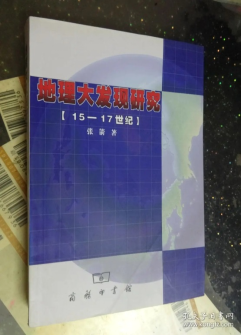Great Geographical Discovery Research, 15th-17th Centuries, is the final result of the National Social Science Foundation Youth Project completed only by Mr. Zhang Jian(张箭), professor, doctor and doctoral supervisor of the School of History and Culture of Sichuan University, published by the famous Commercial Press in 2002, revised and reprinted in 2021, with a total of 390,000 Chinese characters.
"There is a new world outside the world."Great Geographical Discovery Research is a systematic study of this major event from the 15th to the 17thcenturies. It combs through the historical context of geographical discoveries and seafaring expeditions, and shows the magnificent course of human conquest of the Atlantic, Indian, Pacific and Arctic Oceans, and the discovery of southern Africa, North and South America, Australia-Oceania and northern Asia. The solid literature, innovative views and broad vision of this book make it still a representative work of great geographical discoveries in China's academic circles. Its research on geographical discoveries is still leading afore the Chinese academic community. The geographical discoveries of the mid-to-late 15th century to the end of the 17th century were the most significant historical events in the late Middle Ages and early modern periods, which had a profound impact on human society and world history.
Geographical discoveries are often called great discoveries and great expeditions in the West, great geographical discoveries in the former Soviet Union, the great maritime ages in Japan, and opening new routes in China. All in all, if the great seafaring and expeditions gain the great achievements, then it constitute the great geographical discoveries.
This book systematically and deeply studies the great geographical discoveries and nautical expeditions, outlines their basic historical clues, examines important historical events, examines important historical events, discusses relevant basic theories and important concepts, evaluates many historical figures, and denies their historical merits. This book is rich in historical materials and documents, and more than 100 kinds of Chinese, English, Russian, and Japanese languages documents are cited. The content is self-contained as system and the annotations are slightly detailed. The book puts forward many new views and new viewpoints with originality, which not only have profound academic value, but also have certain practical significance and role. The revised and reprinted edition of this book also coincides with and echoes the grand national strategy of the current "Belt and Road".
Table of Contents
Preface
Chapter 1 Introduction to "Geographical Discovery"
Chapter 2 The Basis and Background of the Great Geographical Discovery
Chapter 3 The Portuguese Discovery of West Africa and the South African Coast and the Opening of New Routes
Chapter 4 Columbus's Crossing of the Atlantic Ocean to Discover the West Indies
Chapter 5 Why Chinese Did Not Participate in the Geographical Discovery
Chapter 6 Other Important Geographical Discoveries from the End of the 15th Century to the First Half of the 16th Century
Chapter 7 The First Circumnavigation of the World and Its Discoveries Chapter 8 Western Europe's Quest for New Routes to Northeast Asia and
the Discovery of the Arctic Ocean
Chapter 9 The Discovery of the Major Islands of Australia and Oceania Chapter 10 Britain and France Continue to Explore the Northwest
Passage and Discover North America
Chapter 11 Russia's Geographical Discoveries in North Asia and the Arctic Ocean
Chapter 12 The Great Role and Impact of the Geographical Discoveries Conclusion
Appendix: Main References and Bibliography
Revised Afterword
(Department of History, Zhang Jian张箭)

2021 edition

2002 edition

author

